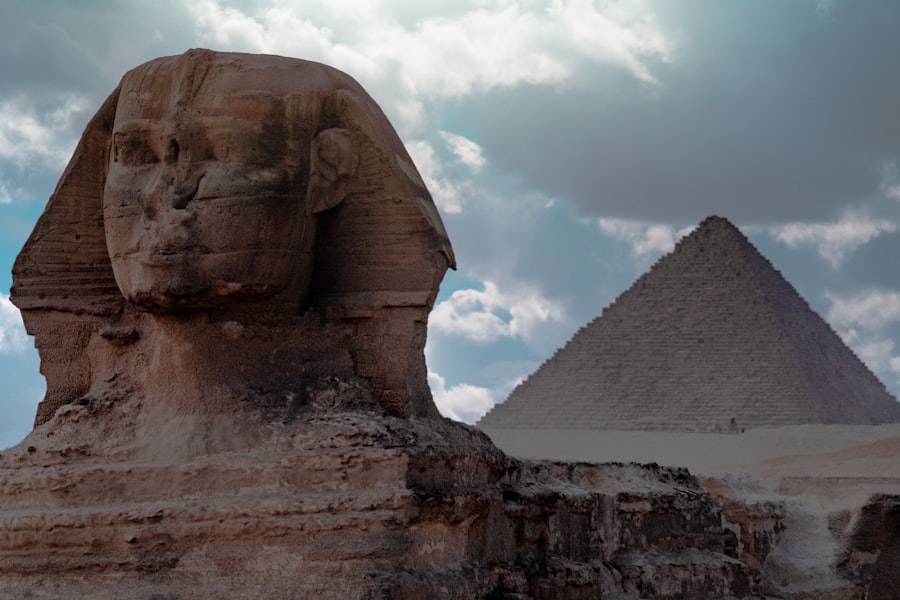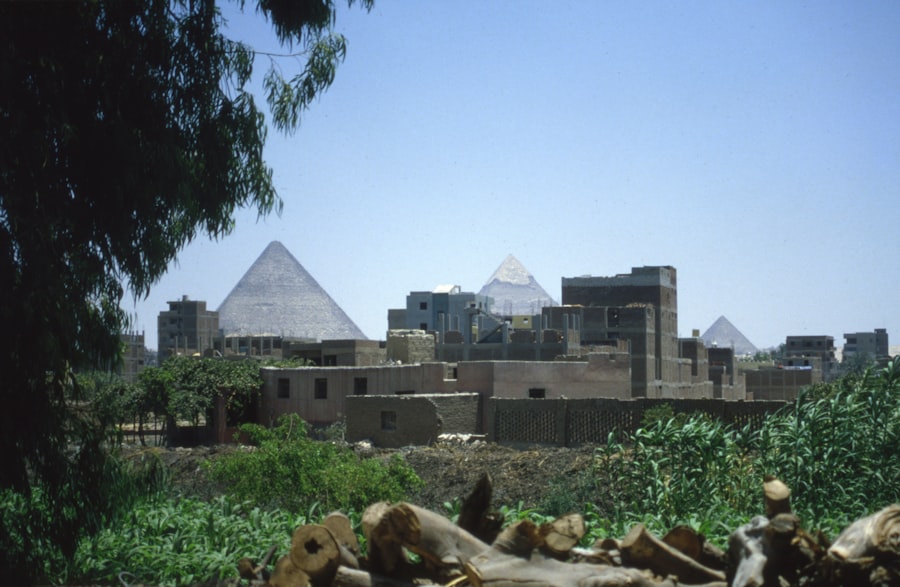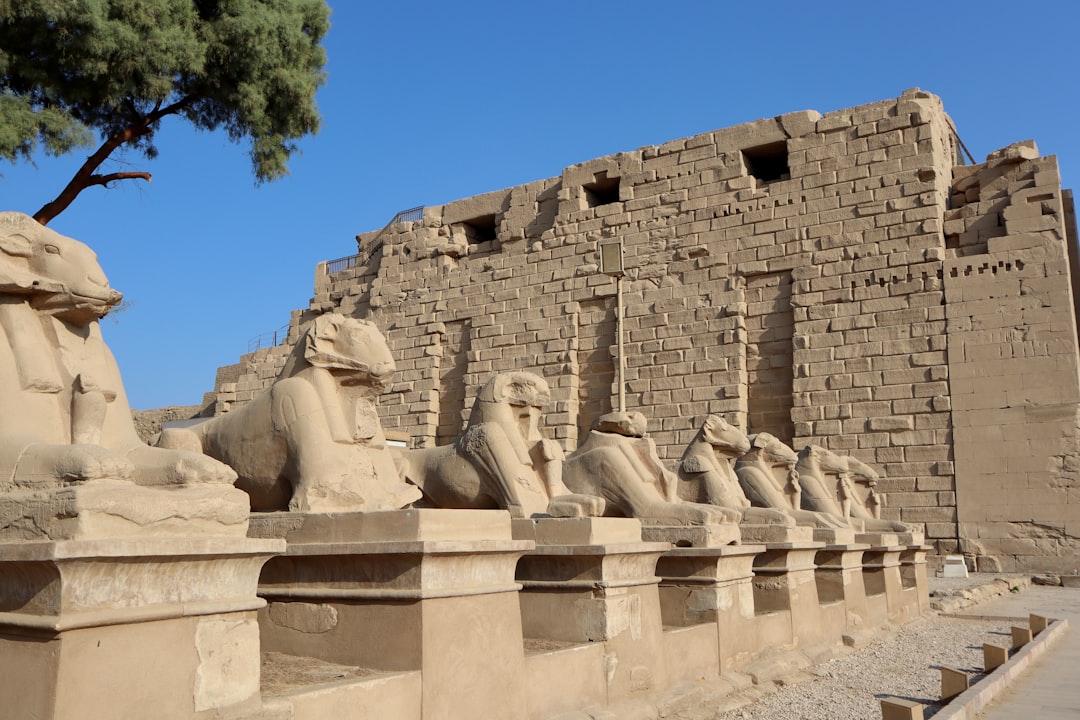The pyramids of Egypt stand as monumental testaments to the ingenuity and ambition of an ancient civilization. Towering above the desert sands, these structures have captivated the imagination of historians, archaeologists, and tourists alike for centuries. The Great Pyramid of Giza, in particular, is a marvel of engineering, constructed with precision that still baffles modern architects.
Built during the Fourth Dynasty around 2580–2560 BC, it was originally encased in smooth, white Tura limestone, which reflected the sun’s rays and made it shine like a jewel. The sheer scale of the pyramids, with millions of limestone blocks weighing several tons each, raises questions about the methods employed by the ancient Egyptians to transport and assemble such colossal edifices. Scholars have proposed various theories regarding the construction techniques used to build these iconic structures.
Some suggest that a series of ramps were employed to move the heavy stones into place, while others argue for a more complex system involving levers and counterweights. Despite extensive research, no definitive answer has emerged, leaving the construction of the pyramids shrouded in mystery. Additionally, the purpose of these grand structures extends beyond mere tombs for pharaohs; they were also designed to facilitate the deceased’s journey into the afterlife, reflecting the Egyptians’ profound beliefs in immortality and the divine.
Key Takeaways
- The pyramids and the Sphinx hold many unresolved mysteries about their construction and purpose.
- Ancient Egyptian hieroglyphics provide crucial insights but remain partially undeciphered.
- The discovery of the sunken pyramid and hidden tombs reveals lost aspects of Egyptian civilization.
- Ancient Egyptian medicine and healing practices were advanced and influential.
- The disappearance of Nefertiti and unexplained ancient technologies continue to intrigue researchers.
Unraveling the Secrets of the Sphinx
The Great Sphinx of Giza, with its lion’s body and human head, is another enigmatic symbol of ancient Egypt that continues to intrigue scholars and visitors alike. Carved from a single block of limestone, this colossal statue measures about 66 feet in height and 240 feet in length, making it one of the largest monolithic sculptures in the world. The Sphinx is believed to represent Pharaoh Khafre, who ruled during the same period as the Great Pyramid.
However, its exact purpose and the meaning behind its features remain subjects of debate among historians. Various theories have emerged regarding the Sphinx’s original function. Some suggest it served as a guardian for the Giza Plateau, protecting the pyramids from intruders and symbolizing strength and wisdom.
Others propose that it was an astronomical marker, aligned with celestial bodies to guide the pharaoh’s soul in the afterlife. The erosion patterns on the Sphinx have led some researchers to speculate that it may be much older than previously thought, possibly dating back to a time when Egypt was still emerging from its prehistoric phase. This has sparked further investigation into the civilization’s early history and its relationship with the surrounding environment.
The Enigmatic Hieroglyphics

Hieroglyphics, the intricate writing system of ancient Egypt, is a fascinating blend of logographic and alphabetic elements that has puzzled linguists for centuries. Comprising over 700 symbols, hieroglyphics were used primarily for religious texts, monumental inscriptions, and administrative documents. Each symbol could represent a sound, a word, or an idea, allowing for a rich tapestry of expression that conveyed complex concepts and narratives.
The deciphering of hieroglyphics was a monumental achievement in understanding ancient Egyptian culture, largely credited to Jean-François Champollion in the early 19th century. The significance of hieroglyphics extends beyond mere communication; they were deeply intertwined with Egyptian spirituality and worldview. Many inscriptions were believed to hold magical properties, serving as prayers or spells intended to protect the deceased in their journey through the afterlife.
The walls of tombs and temples were adorned with these symbols, creating a visual language that spoke to both the living and the dead. As researchers continue to study these ancient texts, they uncover insights into daily life, religious practices, and historical events that shaped one of history’s most remarkable civilizations.
The Lost City of the Sunken Pyramid
| Metric | Details |
|---|---|
| Location | Caribbean Sea, near the coast of Cuba |
| Discovery Year | 2000 |
| Depth | Approximately 600 meters (1,970 feet) |
| Estimated Age | Over 5,000 years |
| Structure Type | Sunken pyramid with terraces and plazas |
| Material Composition | Limestone blocks |
| Dimensions | Base approximately 200 meters wide |
| Archaeological Significance | Potential evidence of ancient advanced civilization |
| Current Status | Underwater archaeological exploration ongoing |
Beneath the waters of the Nile lies a submerged treasure trove known as the Lost City of Heracleion, often referred to as the “Sunken Pyramid.” This ancient city was once a bustling port and religious center during Egypt’s Greco-Roman period but gradually succumbed to rising sea levels and seismic activity. Rediscovered in 2000 by underwater archaeologist Franck Goddio, Heracleion has since revealed a wealth of artifacts that provide a glimpse into its vibrant past. Excavations have uncovered temples dedicated to Egyptian gods, colossal statues, and everyday items that paint a vivid picture of life in this once-thriving metropolis.
The discovery of inscriptions and coins has also shed light on trade routes and interactions with other cultures during its heyday. As researchers continue to explore this underwater city, they are piecing together not only its history but also its significance within the broader context of ancient Egyptian civilization and its connections to neighboring cultures.
The Curse of the Pharaohs
The notion of a “Curse of the Pharaohs” has captured popular imagination since the discovery of King Tutankhamun’s tomb in 1922 by Howard Carter. Following this momentous find, several individuals associated with the excavation met untimely deaths or experienced misfortunes, leading to speculation about a supernatural curse placed upon those who disturbed the resting place of an ancient ruler. While many dismiss these tales as mere superstition or coincidence, they have fueled countless stories and films that romanticize ancient Egypt’s mysteries.
Skeptics argue that the so-called curse can be attributed to natural causes such as bacteria or mold found within tombs that could lead to illness. However, this has not deterred enthusiasts from exploring the darker side of Egyptology. The allure of curses taps into humanity’s fascination with death and the afterlife, reflecting deeper fears about mortality and respect for ancient traditions.
As researchers continue to investigate these legends, they highlight how cultural narratives shape perceptions of history and influence modern interpretations of ancient practices.
The Tomb of King Tutankhamun

King Tutankhamun’s tomb is perhaps one of the most famous archaeological discoveries in history. Located in the Valley of the Kings, this burial site was unearthed almost intact, providing an unprecedented glimpse into royal life during Egypt’s 18th Dynasty. The tomb contained a wealth of artifacts, including gold jewelry, chariots, and an intricately designed sarcophagus that showcased exquisite craftsmanship.
The significance of Tutankhamun’s tomb extends beyond its material wealth; it has become a symbol of Egyptology itself. The young pharaoh’s life and reign were relatively short-lived—he ascended to the throne at just nine years old and died around eighteen—but his tomb has sparked immense interest in ancient Egyptian culture.
Scholars have debated various aspects of his life, including his lineage and possible causes of death. As ongoing research continues to reveal new findings from his tomb, it remains a focal point for understanding not only Tutankhamun’s legacy but also broader themes within ancient Egyptian society.
The Ancient Egyptian Medicine and Healing Practices
Ancient Egyptian medicine was a complex system that combined practical knowledge with spiritual beliefs. Healers known as “swnw” practiced various forms of medicine that included herbal remedies, surgical procedures, and magical incantations aimed at curing ailments. Medical papyri such as the Ebers Papyrus provide valuable insights into their practices, detailing treatments for everything from wounds to digestive issues.
These texts reveal a sophisticated understanding of anatomy and physiology for their time. The Egyptians believed that health was closely tied to spiritual well-being; thus, many medical practices involved invoking deities associated with healing. For instance, Imhotep—who was revered as both a physician and architect—was often called upon for divine intervention in healing processes.
Rituals played an essential role in treatment; patients would undergo ceremonies intended to appease gods or spirits believed to be causing their ailments. This intertwining of medicine and spirituality highlights how ancient Egyptians approached health holistically, recognizing both physical and metaphysical dimensions.
The Mysterious Disappearance of Nefertiti
Nefertiti remains one of history’s most enigmatic figures; her beauty and influence have captivated generations. As queen consort to Pharaoh Akhenaten during Egypt’s 18th Dynasty, she played a pivotal role in one of ancient Egypt’s most radical religious transformations—shifting worship from traditional polytheism to monotheism centered around Aten, the sun disk. However, her sudden disappearance from historical records has led to much speculation regarding her fate.
Some historians suggest that Nefertiti may have died young or been exiled due to political strife following Akhenaten’s death. Others propose that she may have assumed a new identity or even ruled as pharaoh herself under a different name after her husband’s reign ended. The lack of definitive evidence regarding her burial site adds another layer to her mystery; while some believe she may be interred alongside Akhenaten in Amarna, others speculate she could be hidden within undiscovered tombs elsewhere in Egypt.
Nefertiti’s legacy endures not only through her beauty but also through her role in shaping one of history’s most transformative periods.
The Underground Labyrinth of the Valley of the Kings
Beneath the arid landscape surrounding Luxor lies an intricate network known as the Valley of the Kings—a burial ground for pharaohs and powerful nobles during Egypt’s New Kingdom period. This site is famous for its elaborate tombs carved into rock faces; however, recent discoveries suggest there may be even more hidden beneath its surface. Archaeologists have uncovered evidence indicating an extensive underground labyrinth that could contain additional burial sites or artifacts yet to be explored.
The labyrinthine structure raises questions about ancient Egyptian burial practices and their beliefs surrounding death and immortality. It is speculated that these hidden chambers may have served as secret repositories for treasures meant to accompany pharaohs into the afterlife or as sanctuaries for sacred objects associated with their cults. As excavations continue in this historically rich area, researchers hope to unlock further secrets about how ancient Egyptians honored their dead while gaining insights into their complex societal structures.
The Hidden Treasures of the Nile River
The Nile River has long been regarded as a lifeblood for ancient Egyptian civilization; its annual flooding provided fertile soil for agriculture while serving as a vital transportation route for trade and communication. However, beneath its waters lie countless treasures waiting to be discovered—artifacts lost over millennia due to natural disasters or human activity. Recent underwater archaeology efforts have begun revealing remnants from shipwrecks carrying goods destined for trade routes across Africa and beyond.
These submerged treasures offer invaluable insights into economic practices during antiquity while highlighting connections between different cultures along trade networks established by Egyptians centuries ago. Items such as pottery shards, jewelry pieces, and tools recovered from riverbeds provide glimpses into daily life while showcasing artistic styles prevalent at various points throughout history. As researchers delve deeper into these underwater sites along one of civilization’s oldest rivers, they continue uncovering stories that enrich our understanding not only of ancient Egypt but also its interactions with neighboring societies.
The Unexplained Phenomena of Ancient Egyptian Technology
Ancient Egyptian technology remains an area ripe for exploration and debate among historians and scientists alike. From their remarkable architectural feats—such as constructing massive pyramids without modern machinery—to their advanced knowledge in fields like astronomy and medicine, Egyptians demonstrated an impressive understanding of engineering principles long before many other civilizations emerged. However, certain aspects remain shrouded in mystery; how did they achieve such precision without contemporary tools?
Some researchers propose that ancient Egyptians utilized simple machines like levers or pulleys combined with skilled labor forces trained in specific tasks over generations—a testament to their organizational capabilities rather than reliance on advanced technology alone. Others speculate about potential lost knowledge or techniques passed down through oral traditions that may have contributed significantly toward achieving these remarkable accomplishments over time. As ongoing studies continue examining artifacts left behind by this extraordinary civilization—ranging from tools used in construction projects to writings documenting scientific observations—new revelations may shed light on how ancient Egyptians harnessed ingenuity amidst challenges posed by their environment while leaving behind legacies still admired today.
In conclusion, ancient Egypt remains an enduring source of fascination due to its rich tapestry woven from mysteries surrounding pyramids, sphinxes, hieroglyphics, lost cities submerged beneath waters teeming with history—all intertwined with tales steeped in curses surrounding pharaohs’ tombs alongside advancements made within medicine or technology during antiquity itself!
One intriguing article that delves into the archaeological secrets of Egypt is available on XFile Findings, which explores various hidden aspects of ancient Egyptian history that are often overlooked. You can read more about these fascinating discoveries and the implications they have on our understanding of this ancient civilization by visiting the article [here](https://www.xfilefindings.com/sample-page/).
WATCH THIS! The Sphinx’s Secret Chamber: Why Egypt’s Government Forbids Scanning the Hall of Records
FAQs
What are some lesser-known archaeological discoveries in Egypt?
Some lesser-known discoveries include the recently uncovered tombs in Saqqara, hidden chambers within the Great Pyramid, and ancient settlements along the Nile that predate the well-known dynastic periods.
Why might certain archaeological findings in Egypt be kept from the public?
Some findings may be withheld to protect fragile sites from looting or damage, to allow for thorough research and preservation, or due to political and cultural sensitivities surrounding national heritage.
How do archaeologists verify the authenticity of Egyptian artifacts?
Authenticity is verified through methods such as carbon dating, material analysis, stylistic comparison with known artifacts, and contextual examination within excavation sites.
What role does the Egyptian government play in archaeological excavations?
The Egyptian government regulates excavations through the Ministry of Tourism and Antiquities, granting permits, overseeing research, and ensuring that discoveries are preserved and documented properly.
Are there any controversial theories about Egyptian archaeology?
Yes, some theories suggest alternative timelines for the construction of pyramids or propose that advanced technologies were used by ancient Egyptians, but these are often debated and not widely accepted by mainstream scholars.
How can the public learn more about Egypt’s archaeological heritage?
The public can visit museums, attend lectures, read scholarly publications, and follow updates from official archaeological missions and institutions involved in Egyptian heritage preservation.
